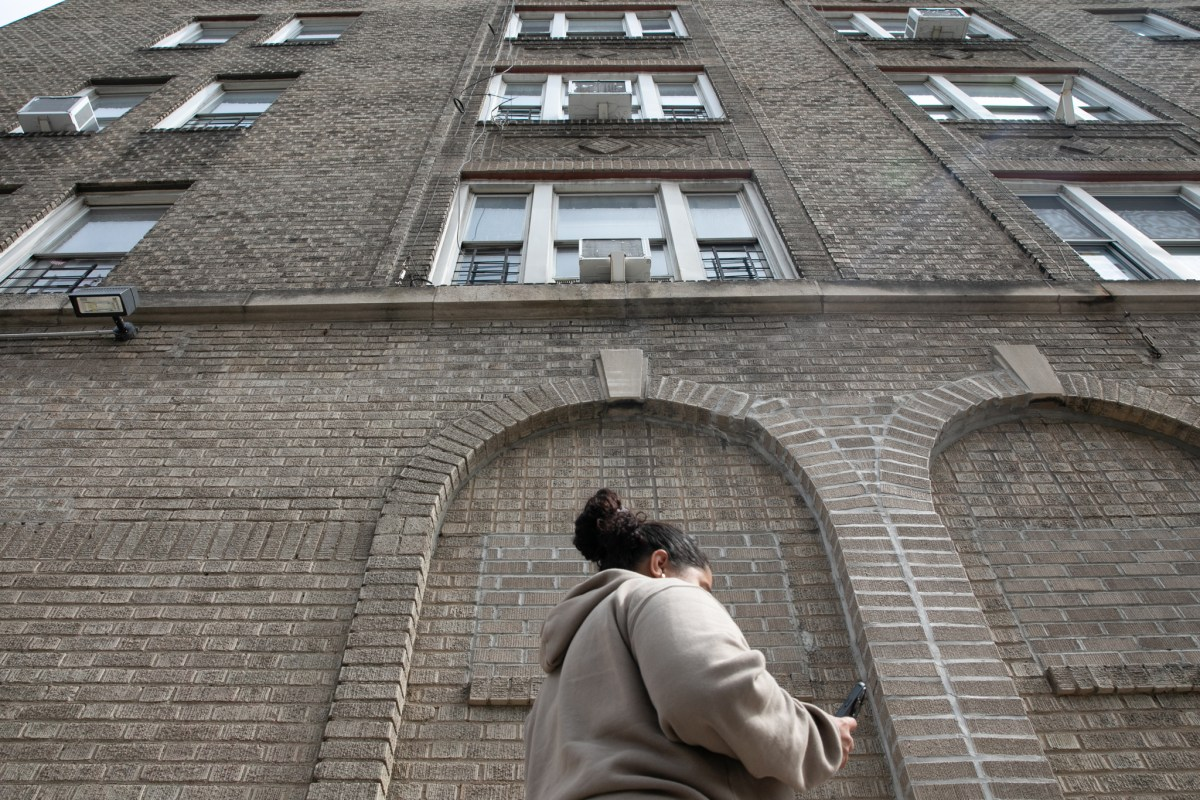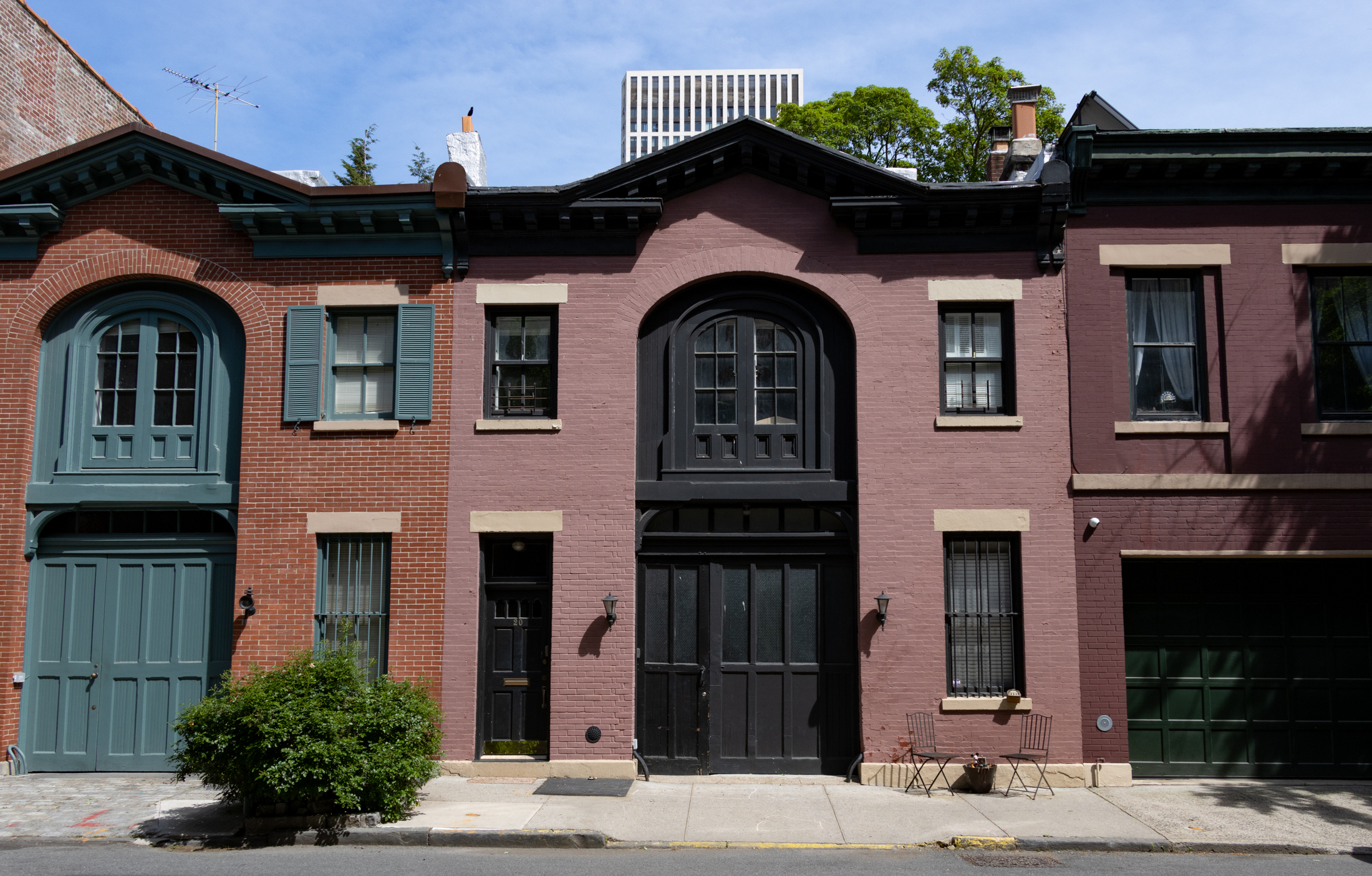Over on Orchard Street (in Queens not the LES)
It’s funny how you can walk by things just about every day and not take notice of them. Case in point are the stubby streets which intersect with Jackson Avenue when turning west out of the so called Queensboro Bridge “Plaza.” There’s Dutch Kills Street, and Purves, and Queens Street (pictured above) which all have their…


It’s funny how you can walk by things just about every day and not take notice of them.
Case in point are the stubby streets which intersect with Jackson Avenue when turning west out of the so called Queensboro Bridge “Plaza.” There’s Dutch Kills Street, and Purves, and Queens Street (pictured above) which all have their own charms. All terminate at the Sunnyside Yards.
On one particularly sunny day, it was Orchard Street which captured my attention.

What drew me down Orchard Street wasn’t affected by the inquisitive NYPD patrol car which slowly followed an odd looking fellow wearing a dirty black raincoat who was taking photographs of warehouses, for I was following the amazing pattern of reflected light emanating from the blue glass of the newly constructed Gotham Center building. The cops were intensely curious as to my purpose, but not so much that they rolled down a window or got out of the car to inquire as to my activities.
Lucky day, thought I, to have a personal bodyguard watching my back while I captured a few shots of the Rosenwasser Bros. facade.

Confession that I had indeed noticed the signage of this facade before must be offered, but for some reason, a conviction that the company had something to do with water tanks had always possessed me. Couldn’t be further from that, it turns out, as the Rosenwassers were magnates in the rag trade. They started out, like many Jewish garment tycoons, in the shirtwaist business in Lower Manhattan. Running what 21st century eyes would process as a sweatshop, they accumulated enough money to set up a large industrial combine in Queens shortly after the opening of the bridge in 1909, and won several military as well as civilian contracts.
By 1913, they were an established and well known Queensican company run by its President, Morris Rosenwasser.

They manufactured baseball cleats sold under Babe Ruth branding in peacetime, and manufactured military footwear and gas masks during war. Also, they supplied the Boy Scouts, and manufactured all sorts of specialty shoes. The large building with the red awning just to the east of the offices isn’t their facility, instead, that was a Steinway Piano plant and warehouse.
It is presumed that the large parking lot which currently enjoys tenancy on the corner of Jackson between Orchard and Queens Streets was the location of the factory they maintained, which at its height in 1918, employed some 2,500 people.

The Rosenwasser factory, during the First World War, was in possession of several valuable contracts with the Federal Government. The mill turned out an average of 6,000 pairs of shoes a day, 15,000 pairs of leggings, and an undetermined number of canvas gas masks, rucksacks, and other commodities for the war department.
A so called “open shop,” the Rosenwassers were prime movers in a case (Rosenwasser Bros. Inc. v. Pepper et al, NYS Supreme Court October 1918) which defined the rights and limitations of organized labor during wartime for a generation.
 ‘
‘
It seems that the United Shoe Workers of America, a Boston based trade union, sent an organizer to the Rosenwasser factory to create a new local. Aggressive tactics and a general unwillingness to compromise brought production to a halt, threatening the company with default and failure to deliver on its Federal contracts. After wrangling with the organizer and his masters in New England, Morris Rosenwasser decided to sue.
The resulting case declared that whereas labor has the right to organize and negotiate for better conditions of employment, the essential nature of war production trumped their rights to “go out,” and binding Federal arbitration would be labors only recourse.
Check out 1919′s THE MISCELLANEOUS REPORTS CASES DECIDED IN THE COURTS OF RECORD OF THE STATE OF NEW YORK OTHER THAN THE Court of Appeals and the Appellate Division 01 the Supreme Court, courtesy Google Books, for more on the controversy and decision.
Newtown Creek Alliance Historian Mitch Waxman lives in Astoria and blogs at Newtown Pentacle.





What's Your Take? Leave a Comment